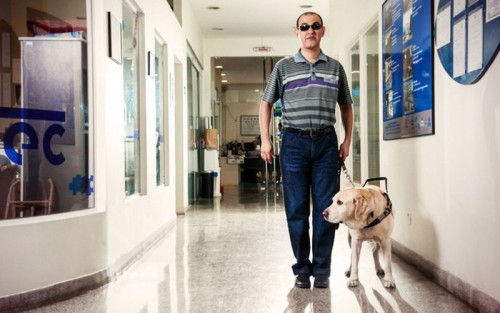
Access to culture: a responsibility of citizenship
Museologist underlines the need for professional training in cultural places to ensure better access for people with disabilities.
By the Editorial Staff
Friday | April 10, 2015 | 3:43 PM | Last update: September 22, 2016, 4:07 PM (Brasilia time)

The Convention on the Rights of Persons with Disabilities, which was unanimously approved by the United Nations in 2007, reaffirmed the right of people with disabilities to participate in the cultural life of their community. It also indicated the measures to be taken so that they have access to cultural, educational, and leisure activities and services.
However, this right is far from being fully achieved. Places like museums, parks, cinemas, and theaters worldwide still fail to offer the means by which these people can enjoy such services. This is what Amanda Fonseca Tojal, a Brazilian museologist and accessibility consultant, points out in an interview with the Sociedade Solidária [Solidarity Society] program* of Boa Vontade TV.
Ms. Tojal believes that people with disabilities have great potential, but that they often end up being ignored: “They have a lot to teach all other people, since generally those who have some type of disability end up developing other abilities, which are also very important for guiding those who are not disabled.”
But for decades they have been at the forefront in the fight for accessibility and still face many problems, since the progress has been slow. “The difficulties begin right at the entrance. People in wheelchairs, for example, report that they have to enter through the back door. Another problem lies in communication. There are wonderful exhibitions, but people who are visually impaired have no contact whatsoever with these works, since they need touch to understand them; they’re not even allowed to touch replicas. It’s not enough to tell them what’s going on there,” she said.
The specialist explains that making culture accessible is much more than just changing the physical environment. It must be understood that people are different and have different needs. For this reason, these institutions should train all their professionals to deal with this public.
“Museums or any other cultural place must receive these people with dignity and respect, and provide them with all the conditions they need to be able to enjoy them. . . . Everybody in those institutions needs to be involved: educators, security staff, and receptionists, in the pavilions and in the exhibitions, so they know how to treat a person who can’t see, a person who’s in a wheelchair, or who is hearing impaired,” she reiterates.

Even with so many difficulties, Amanda Tojal sees a bright future for persons with disabilities having access to cultural and educational environments. “Museums weren’t prepared to receive them, but they began tonotice that it’s important. They taught museums how to be more humane.”
“People with disabilities end up humanizing these places. Because if you think of putting a ramp, for example, it’s not only going to be good for people in wheelchairs, but also for mothers with babies in their strollers, for an elderly person who needs to walk more slowly, and for someone with a broken leg. So the place begins to become more humane when you start thinking about others,” she adds.
______________________
* The Solidarity Society program is broadcast by Boa Vontade TV (channel 20 on SKY cable TV) from Monday through Friday at 3:30 a.m., 6:30 p.m., and 10:30 p.m.; and on Sundays at 7:30 a.m. and 10:00p.m. (BRT). You can watch it online via the Good Will Portal by accessing www.boavontade.com/english.


